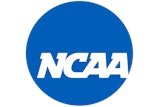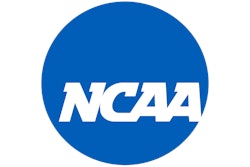Knocked down by a pitch, an injured ballplayer strikes out before the Supreme Court of California.
While it is generally accepted that being hit by a baseball is one of the inherent risks of the sport, the Supreme Court of California in Avila v. Citrus Community College District [38 Cal. 4th 148 (2006)] was recently asked to determine whether being hit by a pitch that was intentionally thrown at a batter was, as well.
Jose Avila played baseball for Rio Hondo Community College. During a game at Citrus Community College, Rio Hondo's pitcher hit a Citrus College batter with a pitch. In the next inning, when Avila came to bat, the Citrus College pitcher - in an apparent act of retaliation - hit him in the head with a pitch, cracking his batting helmet. Avila suffered severe pain, numbness and dizziness, and had to be removed from the game.
In filing suit, Avila alleged that Citrus College was negligent in failing to properly supervise its pitcher, failing to provide umpires or other supervisory personnel who would keep control of the game, and failing to summon or provide medical care when he was obviously in need of it. At trial, Citrus College argued that it was immune from liability under Gov. Code 831.7, which immunizes public entities from liability for injuries sustained during hazardous recreational activities. The trial court agreed and dismissed Avila's lawsuit. The Court of Appeal, however, reversed the trial court's decision, concluding that 831.7 does not extend immunity to claims predicated on the negligent supervision of public school athletes, and that the rival college owed a duty of supervision to the player.
On appeal to the Supreme Court of California, the court was asked to answer two questions:
1) Does Government Code 831.7, which immunizes public entities from liability for injuries sustained during hazardous recreational activities, bar recovery against Citrus College?
2) If not, does Citrus College owe any duty to visiting players that might support a claim of negligence?
Section 831.7 states, "Neither a public entity nor a public employee is liable to any person who participates in a hazardous recreational activity ... for any damage or injury to property or persons arising out of that hazardous recreational activity."
Unfortunately, since the statute does not specifically define "recreational activity," the Supreme Court found the language ambiguous. This ambiguity, the court noted, was reflected in the decisions of California's lower courts when applying the statutory language to negligence claims against schools and universities. For example, in Acosta v. Los Angeles Unified School Dist. [31 Cal. App. 4th 471, (1995)], a high school gymnast fell during a difficult maneuver, landed on his neck and was rendered a quadriplegic. The Court of Appeal in that case ruled that 831.7 did not immunize the school district from liability for negligent supervision. While the court acknowledged that gymnastics was a "hazardous activity," it concluded that school districts have a well-established duty to provide reasonable supervision of school-sponsored extracurricular sports programs. Therefore, the Acosta court reasoned that the term "recreational" should be interpreted to exclude supervised school-sponsored extracurricular athletics.
A similar case with a different result, Ochoa v. California State University [72 Cal. App. 4th 1300, (1999)], involved students from California State University, Sacramento. During an indoor intramural soccer game, John Ochoa was injured when a player punched him in the jaw. Ochoa sued the university for negligently failing to supervise the game. The trial court in that case granted Sacramento State's motion for summary judgment and the Court of Appeal affirmed, concluding that 831.7 immunized the university from liability.
The Supreme Court of California held that these differences can be resolved by acknowledging that school-sponsored and supervised sports activities are not "recreational" in the sense intended by the statute, and thus 831.7 does not immunize public educational entities from liability for injuries sustained by students during participation in such activities. Since Avila was injured while participating in an intercollegiate baseball game, Section 831.7 does not immunize Citrus College from liability.
The Supreme Court of California next moved to the second question, whether Citrus College owed Avila a duty of care. In concluding that Citrus College did not owe Avila a duty to prevent the home team's pitcher from hitting batters, the court ruled that even beanings that were intentional were an inherent risk of playing baseball.
To support this conclusion, the court found that whether intentional or not, the dangers of being hit by a pitch and the strategic benefits that arise from disrupting a batter's timing are only minimally dependent on the skill level of the participants. In addition, the court found that there was nothing legally significant about the level of play in this case; there was no reason to distinguish between collegiate and professional baseball in applying primary assumption of risk.
Although the court acknowledged that an athlete does not assume the risk of reckless conduct totally outside the range of ordinary activity involved in the sport, the court determined that being hit by a pitched ball is such an inherent risk of baseball that even a beanball does not fall outside this range. Consequently, the court ruled, the doctrine of primary assumption of risk bars any claim predicated on the allegation that the Citrus College pitcher negligently or intentionally threw at Avila.
As for Avila's final two claims - that Citrus College breached its duty by failing to provide conscientious umpires and appropriate medical care - the court rejected both arguments.
First, the court held that Citrus College only owed Avila a duty not to increase the risks inherent in the sport, not a duty to decrease the risks. Second, the court found that since Avila's own Rio Hondo coaches and trainers were present, they had exclusive authority to determine whether Avila needed to be removed from the game for a pinch runner in order to receive medical attention. Thus, even if the district were responsible for causing Avila's injury, at most it would have had a duty to ensure that Avila's coaches and trainers were aware he had been injured so that they could decide how best to attend to him.
Finally, even though intentionally throwing at a batter is forbidden by the rules of baseball, the court held that any sanctions should emanate from college or conference administrators, not the courts. If the court were to impose legal liability for such conduct, the court reasoned, it might fundamentally alter the nature of the sport by deterring participants from vigorously engaging in activity that falls close to, but on the permissible side of, a prescribed rule. It should be up to an umpire to punish a pitcher by ejecting him from the game, or up to a league to suspend him. By contrast, the insertion of tort law could have a chilling effect on pitchers, keeping them from throwing close to the batter's body - a permissible and essential part of the sport - out of fear of a suit over an errant pitch.
While the Supreme Court of California's decision in Avila is only binding in California, it will be interesting to see if other courts follow California's lead, for two important reasons.
First, by ruling that getting hit by a pitch intentionally thrown at one's head is an inherent risk of the sport, even though it is forbidden by the rules of the game, the court has opened the door for the defense to be used in other sport injury cases, such as late hits in football, cross-checking in hockey and intentional fouls in basketball - all of which are potentially dangerous actions that one can argue are inherent to the sports in question. Second, the court's decision distorts the negligence concepts of assumption of risk and due care, turning them into something akin to intentional torts and reckless misconduct. This expansion could have a serious impact on the issues of battery and reckless misconduct, and the safety of all athletes.




































